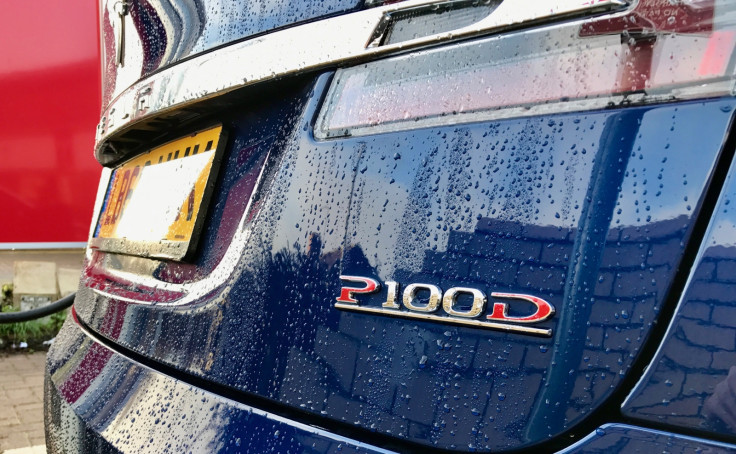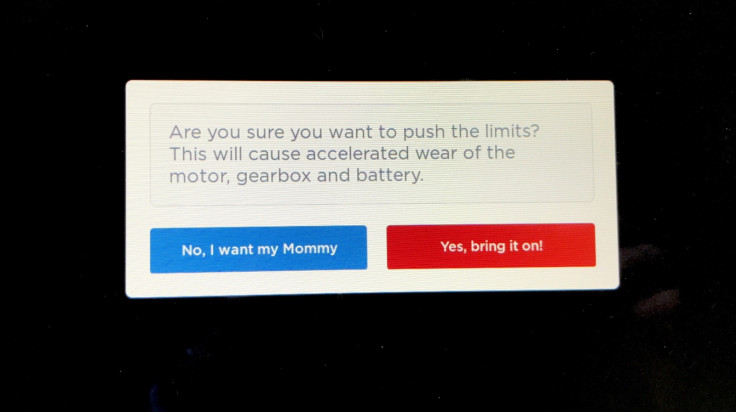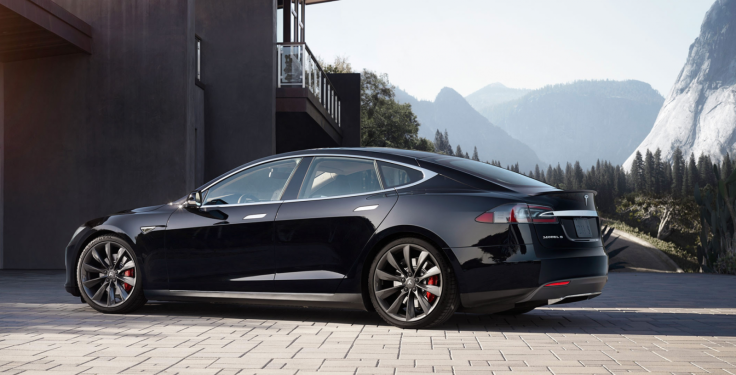Tesla Model S P100D Ludicrous review: Behind the wheel of the world's quickest car
Our favourite electric car is quicker than ever, but is the extra power worth a huge new price tag?

"Tesla will never stop innovating. People are buying the wrong car if they expect this. There will be major revolutions every 12 to 18 months."
This was Tesla boss Elon Musk on Twitter recently when asked why his cars receive regular updates which cannot be fitted to older vehicles.
It may go against the grain of much of the automotive industry, but striving for perfection through constant improvement is central to what Tesla stands for, and it's why, just a year on from our last drive of its electric Model S saloon car, there have been numerous changes to the car's exterior, interior, performance and its autonomous driving system, Autopilot.
Despite its small size, it is sometimes hard to keep track of the Tesla range. Changes are made often and Musk's desire for constantly bettering himself and the competition has culminated in the car you see here, the Model S P100D with Ludicrous Speed upgrade.
This is the fastest, most powerful and most expensive Model S currently on sale and it is also the fastest-accelerating road legal, mass-production car ever made, hitting 60mph in 2.28 seconds. A year ago we were blown away from the P90D (3.2 seconds to 60mph), and two years ago it was the P85+ (4.2 seconds), such is Tesla's rate of change and improvement.

The new P100D's name refers to it being the "performance" version, with a 100 kilowatt-hour battery and all-wheel-drive. It also includes a recent software update with the Ludicrous+ Easter egg, where a long press in the driving settings menu unlocks the car's Launch Control feature and warms the battery until it is capable of that record-breaking acceleration. This isn't just the fastest road car to 60 on sale today, as it was before the Easter egg, it is now the quickest ever and beats the current "hypercar holy trinity", Porsche 918, LaFerrari and McLaren P1.
Enough with the record-breaking talk. What does it actually feel like?
This speed is difficult to put into words which haven't already been written on these very pages. When we first drove the P85D version in May 2015 we described it as "nothing short of extraordinary, like being catapulted forward on a rollercoaster," and now the P100D is simply more so. It is a violent explosion of torque and energy which makes you hold your breath and clench the steering wheel as the car squats down and launches you down the road. As with other Teslas, it is the lack of gears and the momentary respite they offer which is most profound, as the surge from zero to the speed limit is relentless and uninterrupted.
But this ultimate level of performance isn't as instantly attainable as in previous Teslas. To get the full effect you need to switch from Sport to Ludicrous in the driving settings menu, then press and hold Ludicrous for five seconds. This launches a Warp Drive-style animation followed by a warning: "Are you sure you want to push the limits? This will cause accelerated wear of the motor, gearbox and battery."
The two options here are "Yes, bring it on" and "No, I want my Mommy." We're not joking.
Tap yes, obviously, then you have Launch Control and full power - but only if the battery is up to temperature, which on cold days can be up to an hour into your journey.

When not driving like your hair is on fire, the P100D feels much like every other Model S. It is smooth and comfortable, the steering is light, and although the brake pedal lacks the reassuring feedback and bite of other high-performance cars, the energy harvesting system, which slows the car and recharges the battery when you ease off the accelerator, means you rarely press the left pedal unless braking hard or coming to a complete stop.
What else does the latest Model S have to offer?
Last year Tesla gave the car its first facelift. This saw the traditional front grille make way for a much shallower black strip running across its nose like a moustache. The interior has also changed, with the central storage trough between the front seats making way for a pair of new storage bins. These make much more sense from a security point of view, hiding your possessions from view, but feel cheap considering the P100D's £129,400 asking price. Even at £62,000 for the most basic Model S, some aspects of the interior are disappointing. Lashings of leather and (optional) Alcantara help, but it isn't on par with what Audi, BMW and Jaguar offer for the same price.
As always with Tesla, the toys and gadgets go some way to make up for this. The massive touchscreen still feels ahead of its time, while the Mercedes-sourced switch gear make driving the Model S a complete doddle. It's a case of forwards, backwards and park; that's it. No handbrake, no clutch, no need for the car-shaped key fob to ever leave your pocket, and no need to turn anything off. Just stop, press park, get out and walk away. For simplicity the Model S, and larger Model X which works in the same way, are hard to beat.

Also new is the HEPA filter and "bioweapon defence mode", which Tesla claims is hundreds of times more efficient than air filters used by other cars. This removes pollen, bacteria and pollution from the air before it enters the cabin and creates positive pressure inside the car to keep particles out. It's also quite loud, cranking the air conditioning fan up to 11 to keep the cabin pressurised, but if you drive through a heavily polluted city like London or Beijing then bioweapon defence could be less of a gimmick than it sounds.
Finally, all new Teslas now come equipped with second-generation Autopilot, a system allowing the car to drive itself. The new version includes more cameras and will eventually become far more intelligent than version one (which continues to receive software updates of its own) but for now the fleet is still "learning" and calibrating, so can't be properly tested. We'll have more on Autopilot 2 later in 2017.
The P100D is monstrously fast. The way it sets off is record-breaking and its overtaking ability is astonishing. This turn of speed is a joyous thing which is as addictive as it is easy and un-intimidating. But with great performance comes huge expense.
The P100D starts at £129,400 and can cross the £160,000 barrier with options; whereas the regular 100D, with its 4.2 second 0-60mph time, identical 155mph top speed and slightly increased range (393 miles vs 381), starts at £87,500. The entry-level Model S 60 (0-60mph in 5.5 seconds, top speed 130mph, 248 miles of range) starts at £62,000.
In short, the extra £41,900 is a lot of money to spend on increased straight-line performance, and so in our eyes the regular 100D offers better value for money. But if you can afford it and have your heart set on an electric car, then the P100D is the family-friendly rocket-ship you have been looking for.
© Copyright IBTimes 2025. All rights reserved.






















